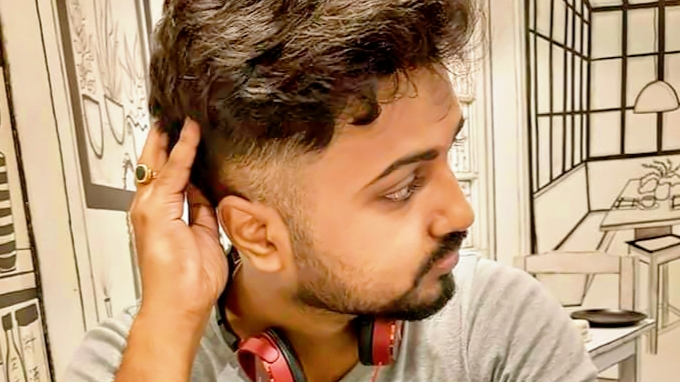For smooth Ad free experience
Subrata Mitra: Revolutionising Cinematography in Indian Cinema
Subrata Mitra, the visionary cinematographer behind Satyajit Ray's 'Pather Panchali', revolutionised Indian cinema. His genius, resourceful, and relentless pursuit of perfection transformed the art of cinematography, captivating global audiences.
Subrata Mitra. Source: GetBengal
Subrata Mitra
In the vast and enchanting realm of Indian cinema, where directors and actors shine brightly in the spotlight, there exists a group of unsung heroes. They are the technical experts, the magicians who work behind the scenes, weaving spells of light and shadow. Among them, one man shattered the norm with his unparalleled genius, his artistry with the lens, and his ability to turn limited resources into cinematic wonders. His name resonates through the corridors of time—Subrata Mitra, the maestro of cinematography, who etched his name in the annals of greatness with his groundbreaking work on Satyajit Ray's masterpiece, Pather Panchali. Through his visionary approach, Mitra not only reshaped the contours of Indian cinema but also left an indelible mark on the international stage, forever changing the way we perceive the magic of moving images.
Born into a middle-class family, Mitra's passion for photography and cinematography blossomed at a young age. When the legendary director Jean Renoir arrived in Kolkata to shoot The River, the determined 20-year-old Mitra approached him, seeking an opportunity to work. Though initially turned down, Mitra's persistence paid off when his father's request led to him being allowed to observe the shoot. Little did Mitra know that another aspiring filmmaker, Satyajit Ray, was also present as an observer on the set, setting the stage for a collaboration that would redefine Indian cinema.
Mitra's career took flight with Ray's masterpiece, Pather Panchali (1955), where he showcased his technical prowess and artistic vision. Working within the limitations of a modest budget, Mitra devised a groundbreaking technique known as bounce lighting. When faced with the challenge of simulating shadowless diffused light inside a studio, Mitra ingeniously placed a framed white sheet above the set to resemble a patch of sky. Studio lights positioned below this fake sky bounced off the surface, creating a soft, diffused, and shadowless illumination. This innovative approach not only captivated audiences but also earned accolades from his international peers.
Mitra's relentless pursuit of perfection led him to experiment with cinematography further. During the filming of Kanchenjunga, Ray's first colour film, Mitra found himself shooting amidst unpredictable mist in Darjeeling. While another cinematographer struggled with the adverse conditions, Mitra embraced the mist, considering it an essential element for capturing the desired ambiance. His ability to create mesmerising visuals even in challenging environments solidified Mitra's reputation as a visionary.
In Charulata, Mitra faced a unique challenge: the possibility of multiple shadows caused by the necessary lighting for interior shots. Undeterred, he embarked on a series of experiments, ultimately crafting wooden boxes fitted with multiple household lamps. Each box was meticulously arranged with separate switches and covered with tissue paper, resulting in a sophisticated, shadowless light that emanated from these seemingly crude contraptions. Mitra's ingenuity revolutionised lighting techniques and set a new trend among cinematographers in Bengal.
Subrata Mitra was not just a cinematographer; he was a perfectionist in every aspect of his life. His deep involvement extended beyond the realms of filmmaking. As a member of the advisory board for the SRFTI, Mitra even scrutinised the quality of the institute's canteen, ensuring excellence in every detail. Whether it was playing the sitar, painting, or cinematography, his commitment and dedication remained unwavering.
In his twilight years, Mitra embarked on a solitary mission to enhance film projection quality in Kolkata's theatres. Recognising its vital role in the viewer's experience, he personally visited cinemas, monitoring screenings and protesting against inferior projection. This even led him to stage a sit-in at the Nandan complex. Mitra comprehended that inadequate projection could undermine the brilliance of cinematography, thereby diminishing a film's overall impact.
Sadly, Mitra's recognition came late in life. However, his contributions to Indian cinematography were finally acknowledged with a National Award for New Delhi Times (1985) and the Eastman Kodak Lifetime Achievement Award in 1992. To honour his memory, his ancestral home at 70, Sarat Bose Road was granted heritage status by the West Bengal Heritage Commission. Plans are underway to establish a museum there and install a blue plaque, ensuring Mitra's name lives on among film historians, scholars, and enthusiasts.
Subrata Mitra's indomitable spirit and artistic genius transformed Indian cinema. With innovative techniques, he captivated global audiences, elevating cinematography to new heights. His relentless pursuit of perfection and resourcefulness left an indelible imprint on filmmaking. Let us celebrate his pioneering contributions, honouring Subrata Mitra as the true revolutionary who reshaped cinematography in Indian cinema and beyond.

Anirban Kar Author
I am a 3X Top Writer on Medium.com and have been published by top publications like Start Up, Mind Cafe, Better Marketing, & The Writing Cooperative. I'm also an editor for The Brave Writer, a pub for aspiring writers.
You might be interested in reading more from
Policies

Know What Happened On